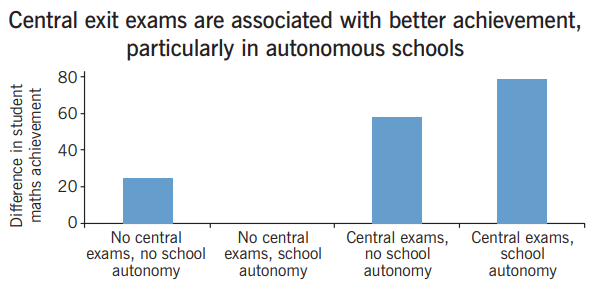Average student achievement levels vary significantly across nations in core skills. Recent international achievement assessments show that students in some countries do far better on core subjects, including science, technology, and reading abilities than their peers in other nations. This essay argues that differences in the organization and governance of education systems account for the gaps in test scores across countries. The discussion draws on empirical evidence to explain why American kids get outscored on tests by children from other countries and challenge the hoax that they are lazy and unwilling to work hard in school.
The U.S. falls behind in the global education race. Young American students fared poorly on a recent international achievement test, emerging 38th in science (DeSilver, 2017). The performance remained unimpressive in Organization for Economic Cooperation and Development (OECD) member countries, where American children were ranked 30th and 19th in mathematics and science, respectively (DeSilver, 2017).
In another cross-national assessment, the average U.S. student fell more than half the standard deviation behind the average student of the same age in Singapore, Japan, Hong Kong, and Korea (Woessmann, 2016). Similarly, the average American student is 40% and approximately one-third of a standard deviation behind their peers in Finland and Canada, respectively (Woessmann, 2016). These marked gaps clearly indicate that the American kids and education system lags behind the global education race.
The fact that U.S. students get outscored on international student assessments by their peers from other countries is not alarming at all. Many factors at the national level can explain the gaps in student scores. The organization and governance of a country’s education system may explain the above trends. High-performing education systems tend to use standards-based external assessments, equitable resource allocation across all types of schools, competitive compensation of teachers relative to national income, and school autonomy (Wu, 2017).
Other attributes that contribute to better student performance are a strong collaboration between principals, school management, and faculty, positive teacher-student relationships, better disciplinary climates, and large portions of children who attended pre-primary education (Wu, 2017). Countries with high-performing education systems that match these characteristics are likely to be ahead in the global education race.

Differences in how the U.S. education system is organized and governed may explain why American children get outscored on tests by their peers from other countries. Canadian, Korean, Finnish, and other high-performing education systems administer external exit examinations at the end of high school, while the UK and Hong Kong emphasize school autonomy in deciding on courses to offer and teachers to hire (Woessmann, 2016).
In comparison, most U.S. schools have limited autonomy in making decisions related to courses to offer, faculty to hire, and exams to use. Figure 1 above demonstrates that central exams and school autonomy contribute substantially to higher student achievement across national and regional school systems. Furthermore, a larger percentage of American students attend public schools compared to privately run schools, unlike in other countries, such as Belgium, Korea, and the Netherlands, where the majority of their children attend private institutions. In addition, inequitable resource allocation across all types of schools and high poverty levels, especially in rural areas, contain some U.S. schools from attracting and paying teachers relative to national income and implementing effective curricula, consequently leading to low student achievement.
Lastly, the idea that American children are lazy and unwilling to work hard in school is a manufactured crisis designed by policymakers. This observation can be justified by the fact that many factors affect students’ school attendance. At the student level, for example, nutrition and health status, parental income and literacy, and relationship with parents affect children’s development and wellbeing and the capacity to learn (Wu, 2017). At the school level, the safety of the school environment, high expectations, positive reinforcement from teachers and parents, and the opportunity to learn may compromise the capacity to attend school and learn effectively.
In conclusion, differences in national education systems explain the marked variations in student achievement globally. Many factors specific to children, families, schools, and education systems affect students’ school attendance. In this regard, there is a need for a strong education, health, and social policies to create equal opportunities for all children and an enabling learning environment. Misconceptions associating American children with laziness may be overcome if the policymakers emphasize equitable allocation of resources, effective monitoring and supervision, curriculum improvement, and teacher management, as well as policies targeted at disadvantaged groups.
References
DeSilver, D. (2017). US students’ academic achievement still lags that of their peers in many other countries. Pew Research Center. Web.
Woessmann, L. (2016). The importance of school systems: Evidence from international differences in student achievement. Journal of Economic Perspectives, 30(3), 3−32. Web.
Woessmann, L. (2018). Central exit exams improve student outcomes. IZA World of Labor. Web.
Wu, K. B. (2017). Global variation in education outcomes at ages 5 to 19. In D. A. P. Bundy et al. (Eds.), Child and adolescent health and development (3rd ed., pp. 47−55). The International Bank for Reconstruction and Development.
